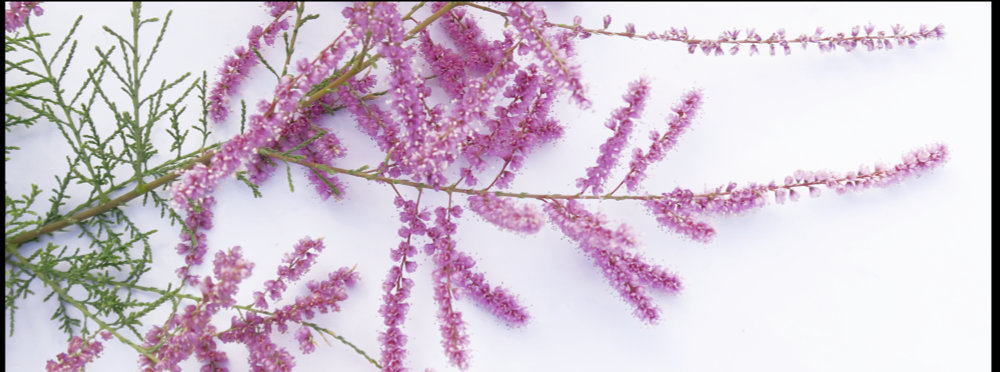Tamaricaceae family – Tamarix.
There are about 78 species in 4 genera including Tamarix with 50 to 60 species.
It has been introduced in many areas of the world as a windbreak or ornamental.
They are shrubs or small trees found in warmer climates.
Leaves, without stalks, are alternately arranged in a spiral and overlap.
Some are very small and scale-like while others are up to 7 mm long.
Most have glands in the leaf that excrete salt via stomata.
The salt forms a crust or bloom on the surface giving a whitish appearance.
Simple hairs are sometimes present.
Flowers are almost always in dense clusters and they may have small bracts.
Flowers are small with parts mostly in 4’s and 5’s.
The calyx can have 4 or 5 persistent sepals either free or joined at the base.
There are 4 or 5 white or pink petals in one whorl.
There may be 2 small appendages at the base (not in Tamarix species).
There may be a hypopgynous or nectiferous disc on either side of the stamens.
It can be a continuous ring or small lobes.
There can be 4 or 5 (8 – 12) stamens that are usually free of each other.
Sometimes there are many stamens that can be free or joined in bundles or a tube.
Anthers are dorsifixed and open via longitudinal slits in various directions.
The superior ovary has 3 – 4 (2 – 5) carpels – sometimes less than the perianth numbers.
There is mostly 1 locule but may be more and there are usually numerous ovules.
There may be no style or 3 – 4 ( 2 – 5) that can be free or joined.
Siimilar for the stigmas.
Fruit are 3 to 5 angled loculicidal capsules that open first at the tip.
The thousands of seeds have hairs all over or at one end.
Plants commonly spread vegetatively.
Variability in the number of flower parts in some species can make identification difficult.
J.F.


